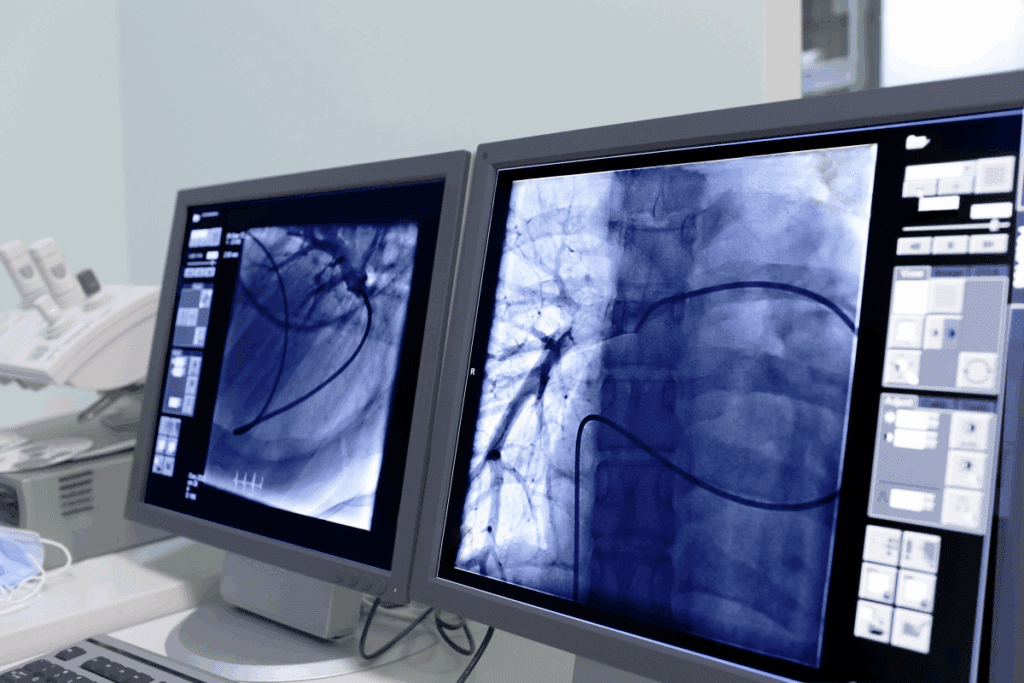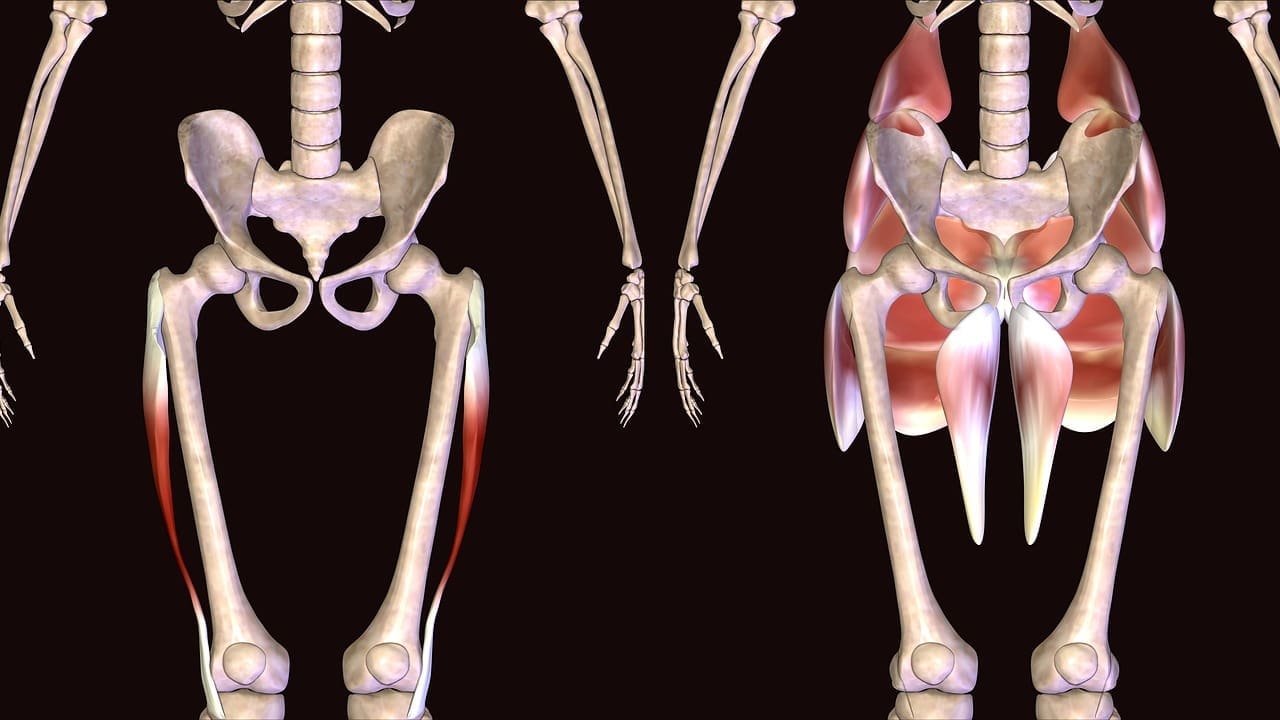Last Updated on November 26, 2025 by Bilal Hasdemir

Medical technology keeps getting better, making interventional radiology a key part of patient care. It uses small procedures to help patients. If you want to be a specialist, knowing about the training is important.
The way IR programs are set up in the U. S. is changing a lot.
There are two main ways to train: the integrated IR/Medical Expert. Each has its own rules and duration. We’ll look into these in this article. Different interventional radiology programs offer unique pathways for training, helping future specialists gain both diagnostic and procedural expertise in minimally invasive care.
Deciding on the right residency program can be tough. But knowing what you need is a good start.
Key Takeaways
- There are two main IR residency paths in the U.S.
- It’s key to know about program lengths and what’s needed.
- The integrated IR/Medical Expert.
- The independent IR residency focuses only on interventional radiology.
- Which program you choose depends on your career goals and what you prefer.
The Growing Field of Interventional Radiology in Modern Medicine

Medical technology keeps getting better, and interventional radiology is playing a bigger role in healthcare. We’re seeing a big change in how medical procedures are done. Now, there’s a focus on treatments that are less invasive, which means patients recover faster and do better.
Evolution from Diagnostic to Interventional Techniques
Interventional radiology has changed a lot from its early days in diagnostic radiology. It used to just be about imaging, but now it includes many treatments. This change is thanks to new tech, like better imaging tools and special instruments for less invasive procedures.
Now, we can not only diagnose but also treat conditions with radiologic methods. This is thanks to better imaging and the ability to navigate blood vessels with great precision.
Scope of Practice and Common Procedures
Interventional radiology covers a wide range of procedures for different health issues. Some common ones are angioplasty and stenting for blood vessel problems, embolization for tumors or bleeding, and biopsies for diagnosis.
These procedures are guided by imaging, which lets doctors watch and act in real time. This field is always growing, giving patients more options than traditional surgery.
Impact on Patient Care and Minimally Invasive Treatments
Interventional radiology has a big impact on patient care. It offers treatments that are less invasive, which means fewer risks, shorter recovery times, and better results for patients.
A big advantage of interventional radiology is that it can target specific areas without open surgery. This means less harm to the patient, less pain, and less scarring.
| Procedure | Description | Benefits |
| Angioplasty and Stenting | Opening blocked or narrowed blood vessels | Restores blood flow, reduces the risk of heart attack or stroke |
| Embolization | Blocking blood flow to a specific area | Treats tumors, controls bleeding |
| Biopsy | Sampling tissue for diagnostic purposes | Provides an accurate diagnosis with minimal invasion |
By pushing the boundaries of interventional radiology, we’re making patient care better and opening up more options for treatments that are less invasive. As tech gets better and techniques improve, interventional radiology’s role in medicine will only grow.
Exploring Interventional Radiology Programs in the United States

The United States has many interventional radiology programs. Each program has its own strengths and focuses. These programs are key in shaping the future of IR and advancing the field.
ACGME Accreditation Standards and Requirements
The Accreditation Council for Graduate Medical Education (ACGME) accredits IR programs in the U. S. Programs must meet certain standards to get accredited. ACGME accreditation ensures that IR programs provide high-quality education and training, preparing residents for modern IR practice.
Some key ACGME requirements for IR programs include:
- Comprehensive curriculum covering both diagnostic and interventional radiology
- Adequate faculty-to-resident ratios to ensure personalized training
- Access to a wide range of IR procedures and techniques
- Regular evaluation and feedback mechanisms for residents
Geographic Distribution of Training Programs
IR programs are found across the United States. Some areas have more programs than others. The geographic distribution reflects both population density and the availability of advanced medical training facilities. Major cities and areas with big academic medical centers often have more IR programs.
Prospective residents should think about the program’s location. It can affect their lifestyle, clinical exposure, and future job opportunities.
Program Sizes and Annual Resident Intake
IR programs vary in size, from small to large. The size of a program can influence the training experience, with larger programs possibly having more diverse cases and smaller programs giving more personal attention.
Applicants should look at program size, annual intake, and training structure. This helps find the best fit for their career goals.
Essential Fact #1: Two Distinct Pathways to IR Certification
Choosing a career in Interventional Radiology (IR) means picking between two main paths. Each path affects how long you train, your clinical experience, and your future career.
Integrated IR/Medical Expert
The Integrated IR/Medical Expert. It’s a five-year program that starts after medical school. It includes:
- A clinical internship year
- Three years of diagnostic radiology foundation
- One year of focused IR training
This approach helps you smoothly move into IR practice. It gives you a solid start in your training.
Independent IR Residency After Diagnostic Training
The Independent IR Residency comes after finishing a diagnostic radiology residency. It’s great for those who want to start with a broader radiology background before diving into IR.
This IR residency can be taken in two ways:
- A standard two-year program for those without prior IR experience
- An accelerated one-year program for those with an Early Specialization in IR (ESIR) certification
Strategic Considerations for Pathway Selection
When deciding between these paths, think about a few things:
- Career goals: If you’re sure you want to focus on IR early, an integrated program might be better.
- Flexibility: Independent IR residency offers more flexibility if you might change your career focus later.
- Program availability: There are fewer integrated IR/Medical Experts.
Knowing about these paths and their effects is key to making a smart choice for your IR career.
Essential Fact #2: Integrated IR/Medical Expert
Understanding the integrated IR/Medical Expert. This training combines diagnostic and interventional skills. It prepares future radiologists for their roles.
The Mandatory Clinical Internship Year
The program starts with a year of clinical internship. This year gives hands-on experience in patient care. It sets the stage for more specialized training.
Residents learn from various medical fields. This boosts their clinical skills and judgment.
Three-Year Diagnostic Radiology Foundation
After the internship, there are three years of diagnostic radiology training. This phase sharpens skills in reading images and understanding procedures. It’s vital for interventional radiology, as it helps in making decisions during procedures.
Two-Year Focused Interventional Radiology Training
The last two years have focused us on interventional radiology. Residents get a lot of practice in interventional procedures. They also learn to manage patient care and develop technical skills.
The program lasts six years. It offers a complete education in both diagnostic and interventional radiology. Here’s a quick overview:
| Year | Training Focus | Key Skills Acquired |
| 1 | Clinical Internship | Patient care, clinical judgment |
| 2-4 | Diagnostic Radiology | Image interpretation, radiologic procedures |
| 5-6 | Interventional Radiology | Interventional procedures, technical skills |
This structured program prepares graduates well for interventional radiology. They get a solid foundation in both areas. The integrated IR/Medical Expert ensuresthorough training.
Essential Fact #3: Independent IR Residency Timeline Options
The independent IR residency has flexible training times. This is great for those with different levels of experience. We’ll look at the different training times and how they help in career growth.
Standard Two-Year Independent Residency Path
The standard path is two years for those who’ve finished diagnostic radiology. It gives deep training in interventional radiology. This ensures residents get the skills needed to do well in their field.
Residents learn many procedures and techniques in these two years. They start with simple cases and move to more complex ones. This makes sure they get a solid education.
Accelerated One-Year Option with ESIR Qualification
Those with an ESIR qualification can take a one-year program. This is for those who’ve already had advanced training. It’s a quicker way to specialize.
The one-year program uses the ESIR foundation. It focuses on advanced techniques and complex cases. This fast track helps candidates specialize quickly.
Transitioning from Diagnostic to Interventional Practice
Switching from diagnostic to interventional radiology is a big change. Independent IR residency programs help with this transition. They offer practical experience and guidance.
Getting used to interventional procedures is key. Residents work with experienced doctors. They also learn to think critically and make quick decisions, important for complex cases.
| Program Duration | Eligibility | Key Features |
| 2 Years | Diagnostic Radiology Training | Comprehensive IR training, broad exposure to procedures |
| 1 Year | ESIR Qualification | Advanced IR techniques, complex case management |
The independent IR residency offers flexible and detailed training paths. Whether it’s the standard two years or the quick one-year option, these programs prepare residents for their careers.
Essential Fact #4: Early Specialization in Interventional Radiology (ESIR)
For those aiming to be interventional radiologists, ESIR is a great chance to start specializing early. The Early Specialization in Interventional Radiology (ESIR) program gives deep training in IR during the diagnostic radiology (DR) residency. We think this early focus can really boost a resident’s career and skills.
Curriculum Requirements for Medical Experts
The ESIR program fits into the Medical Expert, letting residents get real experience in IR. It’s all about learning by doing, with a mix of theory and practice. Residents will do more IR procedures as they go along.
Procedural Minimums and Documentation
To get ESIR certification, residents must do a set number of IR procedures. Keeping detailed records of these is key. It proves they’re skilled. We stress the need for careful record-keeping.
Advantages of ESIR for Career Planning
ESIR has big benefits for planning your career. It shows you’re serious about IR, making you stand out for IR jobs or fellowships. It also builds a strong IR foundation, leading to better patient care and job happiness. Early specialization helps residents choose the right career path.
Essential Fact #5: Dual Board Certification Opportunities
Integrated IR/Medical Expert. This path leads to eligibility for dual board certification in both diagnostic and interventional radiology. This unique feature of the IR/Medical Expert. It lets them practice in both diagnostic and interventional radiology domains.
IR/Medical Expert
A graduate of an IR/Medical Expert. Their training covers both diagnostic radiology and interventional radiology. This wide training is a big plus, as it prepares radiologists for many procedures and diagnostic techniques.
Key Benefits of Dual Board Eligibility:
- Enhanced career flexibility
- Broadened scope of practice
- Increased competitiveness in the job market
Examination Structure and Preparation
The exam for dual board certification tests both diagnostic and interventional radiology knowledge. Candidates need to prepare well, focusing on both diagnostic principles and interventional techniques.
Preparation strategies include:
- Intensive study of radiological literature
- Participation in mock exams and practice questions
- Engagement in educational courses and workshops
Maintenance of Certification Requirements
To keep dual board certification, ongoing professional development is needed. This includes taking CME courses, staying current with radiology advancements, and following certification maintenance rules set by the board.
Here’s an overview of the typical requirements:
| Requirement | Description | Frequency |
| Continuing Medical Education (CME) | Completion of CME courses relevant to radiology | Annual |
| Professional Development | Engagement in professional activities, such as conferences and workshops | Ongoing |
| Certification Renewal | Renewal of dual board certification as per the board’s schedule | Typically, every 10 years |
By getting dual board certification, radiologists show their dedication to excellence and versatility. This improves patient care and advances radiology.
Essential Fact #6: Characteristics of Top Interventional Radiology Programs
Top interventional radiology programs focus a lot on research, handle a wide range of cases, and work well together. They lead in research, offer full training, and support teamwork across different fields.
Research Infrastructure and Publication Expectations
These programs have top-notch research facilities and a great environment for research. The doctors often publish in well-known journals. They also expect residents to be involved in research.
Residents help improve interventional radiology by working on research projects. This boosts the program’s reputation and gives residents valuable skills in research and writing.
Procedural Volume and Case Diversity
These programs handle a lot of cases and offer a wide variety. Residents get to do many procedures, from simple to complex ones. This hands-on experience helps them become skilled and confident.
Handling different cases also makes residents versatile and ready for any challenge in their careers.
Interdisciplinary Collaboration Models
Top programs are known for their teamwork among doctors, radiologists, and other healthcare workers. This teamwork improves patient care by making sure radiology fits well with other treatments.
Residents learn how important it is to work well with others. This prepares them for the team-based work of modern medicine.
Essential Fact #7: Competitive Application Process
The application for IR residency programs is tough and needs careful planning. We’ll look into the details of this process. It’s key to know the timelines, strategies, and what makes an application stand out.
Integrated IR/Medical Expert
For those applying to the integrated IR/Medical Expert, the process starts in the summer before. It’s important to start preparing early. This ensures you meet all the program’s needs and deadlines.
A good strategy is to show off your clinical skills, research experience, and interest in IR. We suggest getting involved in research, going to conferences, and getting strong recommendations.
Independent IR Application Considerations
Applying for independent IR programs is different. You’ve already done your diagnostic radiology training. Now, focus on your clinical skills, procedural experience, and why you want to be an IR specialist.
Also, know the specific needs of independent IR programs. This might include extra certifications or training.
Factors That Make Candidates Competitive
Several things make a candidate stand out for IR residency programs. These include:
- Research experience and publications
- Strong clinical skills and procedural competence
- Demonstrated leadership and teamwork abilities
- A clear and compelling personal statement
To show how competitive IR residency programs are, let’s look at some numbers:
| Program Type | Average Number of Applicants | Positions Available | Match Rate |
| Integrated IR/DR | 250 | 50 | 80% |
| Independent IR | 150 | 30 | 70% |
By understanding these factors and customizing their applications, candidates can boost their chances in the IR residency application process.
Life After Completing Interventional Radiology Residency
IR residents finish their training ready for a promising career. They have many paths to choose from. This opens up various career opportunities, allowing them to make a real difference in healthcare.
Academic Career Trajectories
Many IR residents are interested in academic careers. They can contribute to research, education, and patient care. Academic IR specialists work in universities or teaching hospitals.
- They conduct research to improve IR techniques and technologies.
- They teach and mentor medical students and residents.
- They participate in clinical trials and publish research findings.
Medical Expert, an IR specialist, says, “An academic career in IR lets you shape the future of the field and help patients.”
Private Practice Opportunities
Private practice is another appealing option for IR residents. IR specialists in private practice enjoy a predictable schedule and can earn more. They work in:
- Private hospitals or clinics
- Outpatient IR centers
- Multispecialty group practices
Private practice IR specialists can focus on specific areas and build strong patient relationships.
Fellowship and Subspecialization Options
Some IR residents pursue fellowships for specialized training. Fellowships offer advanced training in areas like:
- Neurointervention
- Oncology interventions
- Vascular interventions
Fellowships enhance skills and knowledge, making specialists more competitive and better at handling complex cases.
Salary Expectations and Job Market Analysis
IR specialists are in high demand, with salaries to match. The median salary in the United States is competitive, influenced by location, experience, and practice setting.
| Practice Setting | Median Salary Range |
| Academic | $400,000 – $500,000 |
| Private Practice | $500,000 – $600,000 |
The job market for IR specialists is strong, with many opportunities. As demand for minimally invasive procedures grows, so does the need for skilled IR specialists.
Conclusion: Navigating Your Path to an Interventional Radiology Career
Understanding the different paths in interventional radiology (IR) is key to making good career choices. Whether you’re looking at an integrated IR/Medical Expert, we’ve covered the important details. This will help you decide what’s best for you.
Choosing the right residency program and getting dual board certification are important steps. We talked about Early Specialization in Interventional Radiology (ESIR) and what makes top IR programs stand out. These include strong research and teamwork.
As you continue in your IR career, think about your long-term goals. Do you want to teach, work in private practice, or specialize further through fellowships? Knowing your goals and the paths available will help you reach a fulfilling career in interventional radiology.
FAQ
What are the two main pathways to IR certification in the U. S.?
There are two main ways to get IR certified in the U. S. You can choose the integrated IR/Medical Expert.
How long is the integrated IR/Medical Expert?
The integrated IR/Medical Expert. It includes an extra year for clinical internship.
What is the duration of the independent IR residency?
The independent IR residency can last one or two years. It depends on whether you have an ESIR qualification.
What is the Early Specialization in Interventional Radiology (ESIR) program?
The ESIR program is a special part of the diagnostic radiology residency. It focuses on interventional radiology training. It has specific procedural minimums and documentation needs.
What are the benefits of the ESIR program?
The ESIR program has many benefits. It offers faster training and makes you more competitive for independent IR residency.
Can I achieve dual board certification through IR residency programs?
Yes, you can get dual board certification through the integrated IR/Medical Expert. This means you’re certified in both diagnostic radiology and interventional radiology.
What are the characteristics of top interventional radiology programs?
Top IR programs have strong research, high procedural volume, and diverse cases. They also value teamwork and collaboration.
How competitive is the application process for IR residency programs?
Applying to IR residency programs is very competitive. Your research experience, clinical skills, and letters of recommendation matter a lot.
What career paths are available to graduates of IR residency programs?
IR residency graduates can work in academia, private practice, or fellowships. They can also specialize in different areas. Salaries vary based on the career path.
What is the role of ACGME accreditation in IR residency programs?
ACGME accreditation ensures IR programs meet quality standards. It helps make sure training is top-notch.
How do I choose between the integrated IR/Medical Expert?
Choosing depends on your career goals and past training. Consider whether you want dual certification and when you want to specialize in IR.
References
- ScienceDirect. (2023). Khaja, M. S. (2023). Status report on the integrated and independent IR residencies, including ESIR. Interventional Radiology, 15(3), 154-161. Retrieved from https://www.sciencedirect.com/science/article/abs/pii/S1051044323006012






